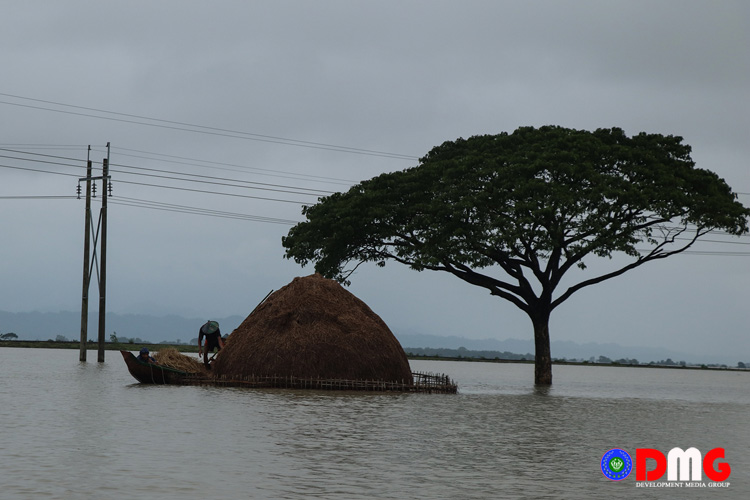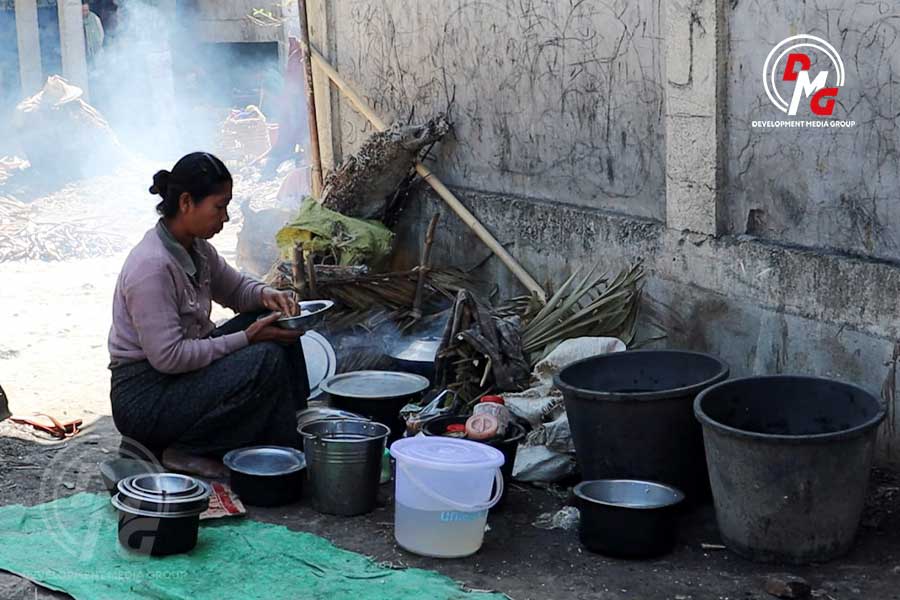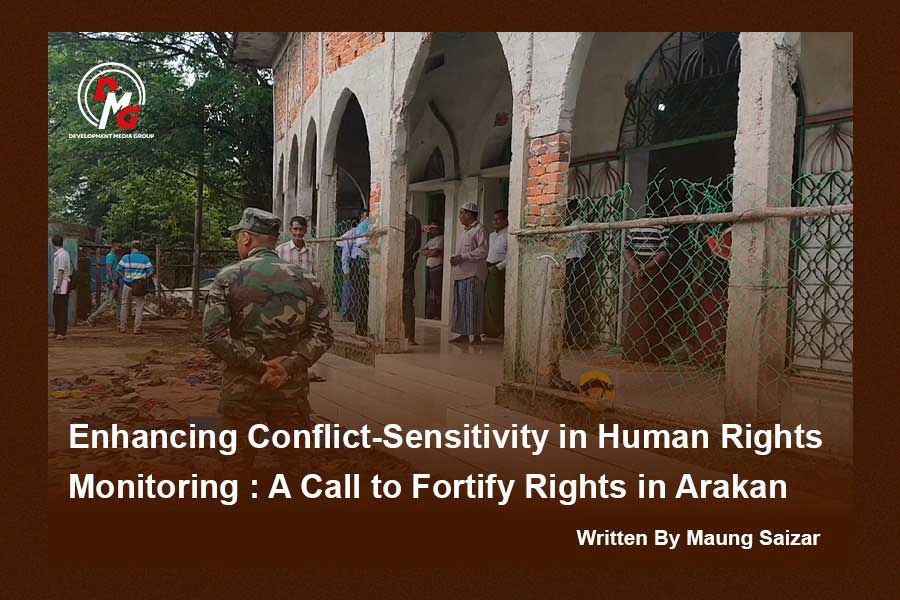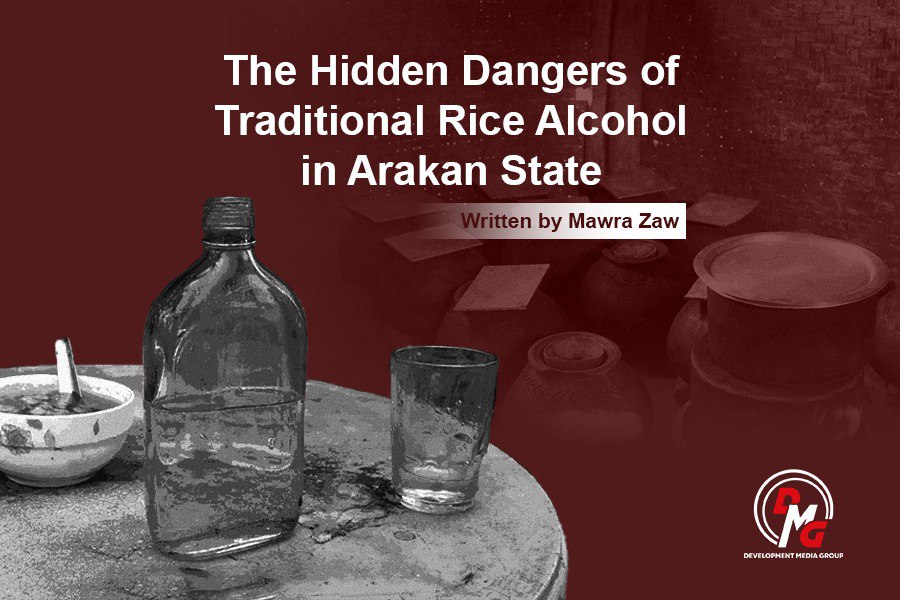- Studying AA's Commander-in-Chief Twan Mrat Naing's Dialogues
- BGB admits to firing at Arakan Army outposts along border
- Junta airstrikes, shelling kill 5 civilians in Ponnagyun
- Junta chief urges Karen people to 'face the truth,' work for peace in Kayin State
- IDP women in Arakan struggle to feed their families amid rising prices
Nearly 70,000 acres of farmland destroyed during floods
Since floods hit some townships in Arakan State recently, nearly 70,000 acres of farmland in Kyauktaw, Mrauk-U, Ponnagyun and Minbya townships were destroyed, according to figures of the Arakan State Farmers’ Union.
18 Jul 2019

Min Tun | DMG
18 July, Sittwe
Since floods hit some townships in Arakan State recently, nearly 70,000 acres of farmland in Kyauktaw, Mrauk-U, Ponnagyun and Minbya townships were destroyed, according to figures of the Arakan State Farmers’ Union.
The six-day flooding in the region destroyed over 10,000 acres of paddy filed in Ponnagyun Township, according to the union.
More than 30,000 acres of paddy field were submerged south of Kyauktaw Township while about 2000 acres of farmland in the west and about 1000 acres of land in the east were flooded.
The flood affected about 20,000 acres in western Mrauk-U Township and about 5000 acres in Minbya Township.
The recent devastation during the flood could lead to rice shortages and it could be more difficult in the coming year, said the chairperson of the Arakan State Farmers’ Union.
“We have already announced that paddy cannot be grown in about 100,000 acres of land due to armed conflicts and the curfew order. Now, the flood hit the four out of seven townships in northern Arakan State. So, I am sure farmers, especially from the flood affected areas, will have a very hard time to do cultivation next year,” said U Kyaw Zan, the chairperson of the Arakan State Farmers’ Union.
He added that self-reliant farmers might face inconveniences to do cultivation again on the damaged farmland.
Since farmers have been encountering challenges due to conflicts and floods, the regional government needs to provide aid for them, U Kyaw Zan said.
“The future of our region is hopeless now because natural disasters hit our region which is poor. So, I wish authorities could provide aid to our people as much as they can,” the chairperson said.
The flood subsided in Kyauktaw, Mrauk-U and Minbya townships currently but people whose houses were destroyed during the flooding and from areas where drinking water wells were tainted are still suffering difficulties.

















